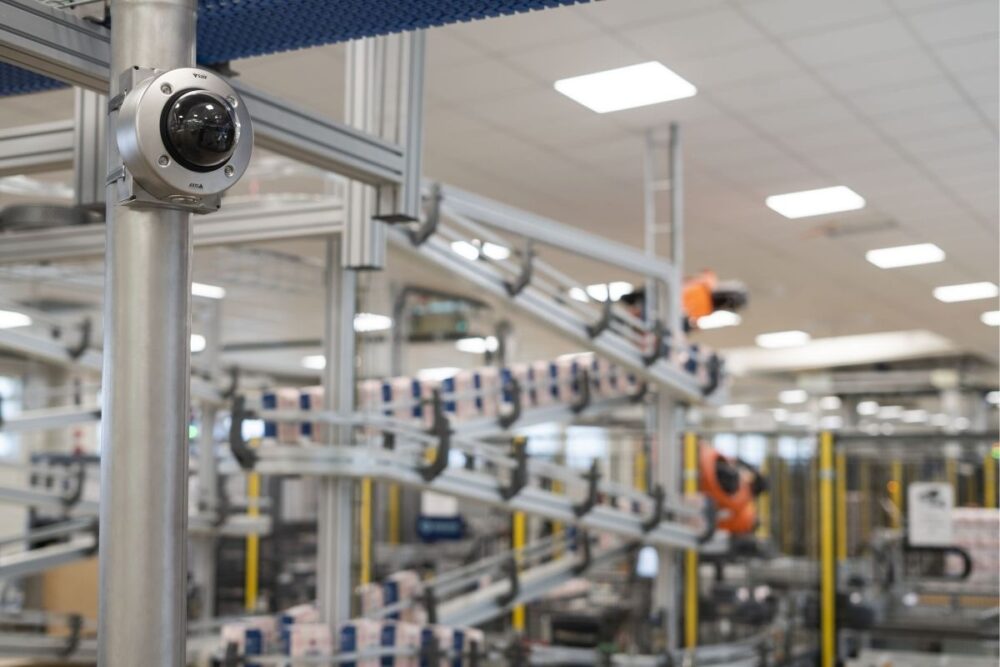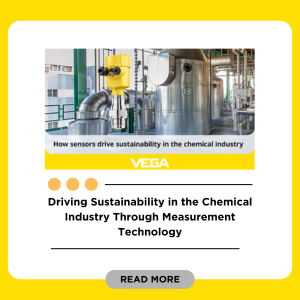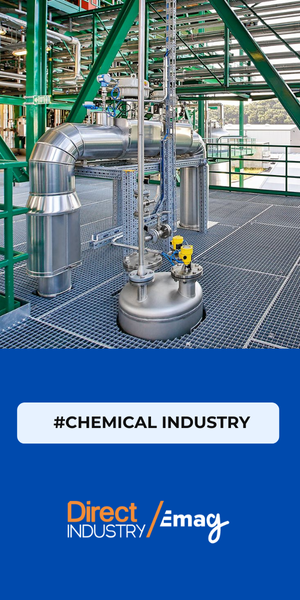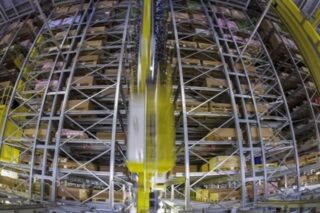While workplace video surveillance has traditionally focused on security, AI-powered machine vision is unlocking the ability to also watch for health, safety and compliance concerns.
Thanks to the improved image quality and connectivity of digital IP cameras, businesses in every sector are finding innovative ways to unlock new benefits from their CCTV video surveillance investments.
The ability to analyze live video feeds using artificial intelligence enables a range of new business cases, from monitoring foot traffic through retail environments to optimizing workflows on the factory floor.
Health & Safety
Enforcing health and safety regulations is another key area where workplace video surveillance can be put to good use, says Eliana Bettio, Head of Product at Australian-based Rapid. Primarily serving customers in transport and logistics, Rapid’s Rapid Aware machine vision tools offer both real-time alerts and ongoing analytics to help manage a wide range of workplace regulations.
“The AI can be trained to recognize specific safety issues, such as providing real-time alerts for events such as when a person comes too close to a moving forklift, perhaps triggering a siren and altering the site manager so they can intervene. At the same time, you can keep ongoing records and track safety trends to see if your health and safety initiatives are making a difference.”
Enforcing compliance in real-time is another key use case for machine vision in the workplace, helping improve safety while also ensuring the business complies to industry regulations.
Along with checking for personal protective equipment (PPE) such as high-vis vests and hard hats, machine vision can also take advantage of facial and number plate recognition. This allows it to integrate with access control systems, to ensure only authorized employees and contractors with the correct certification can enter restricted areas.
“While PPE tends to be a fairly standard requirement in many industries, businesses can customize the system to detect specific scenarios,” Bettio says. “For example, in food production you might watch for cross contamination if employees move between areas, while if you’re working with sensitive information you might watch for unauthorised mobile phone use.”

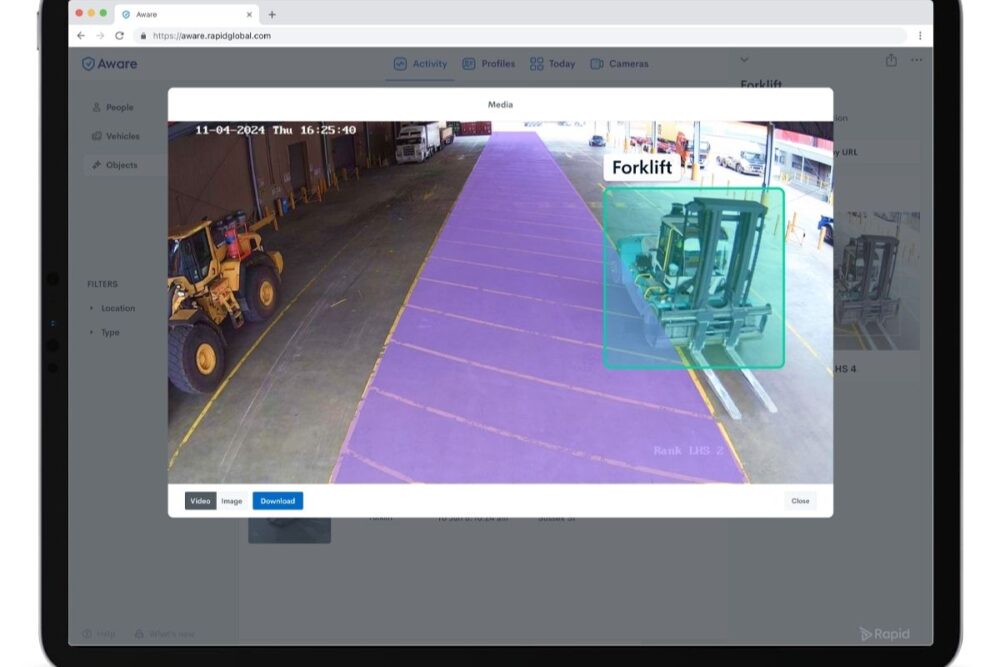
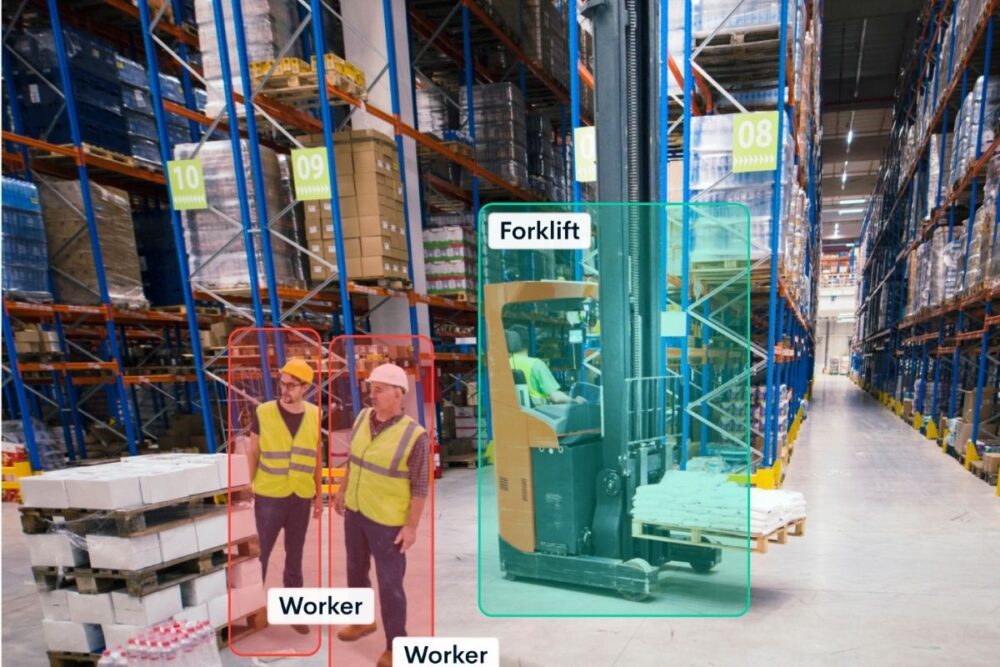
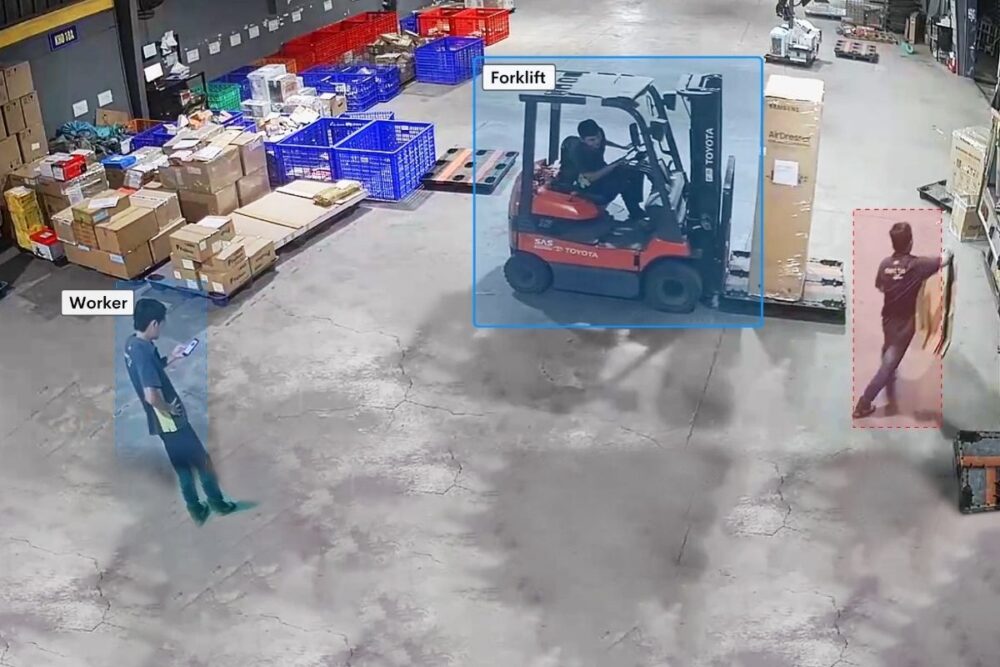
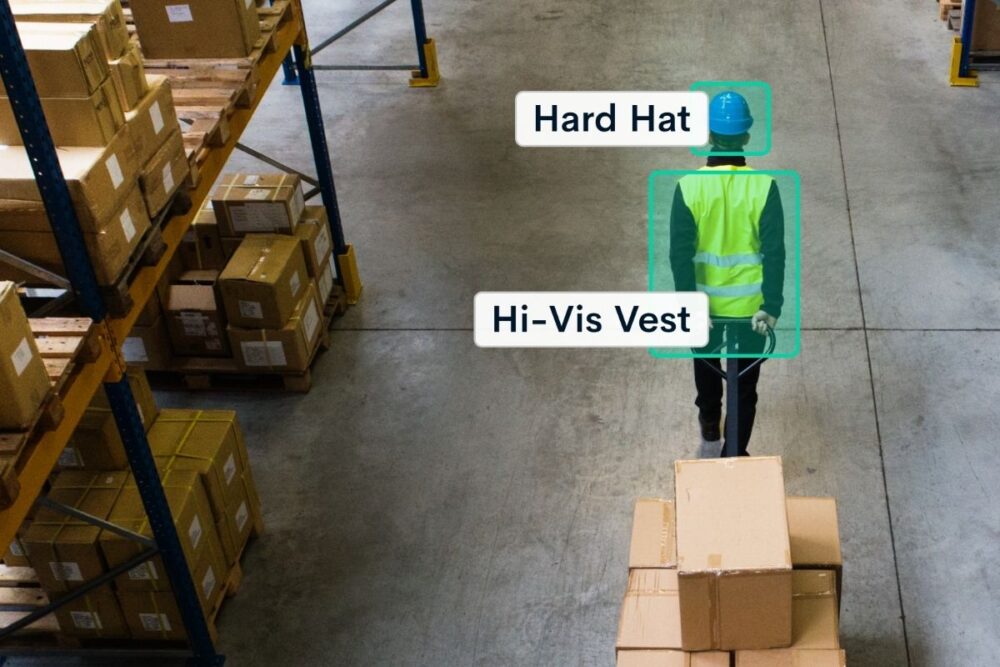
Photos: Courtesy of Rapid Global
Privacy
Most health and safety use cases for machine vision benefit employees and not just the business, but it is still important to be considerate of increasing concerns around privacy, says Mats Thulin, Director of AI & Analytics Solutions at France-based Axis Communications.
Serving a wide range of sectors from industrial and logistics to hospitality and retail, Axis Communications’ machine vision use cases extend to retail bodycams, pedestrian detection at vehicle exits and loitering detection outside entrances to safeguard employees exiting after dark.
Managing employee acceptance and addressing privacy concerns are essential to ensuring a successful roll-out of machine vision, Thulin says. This includes providing those monitored with a clear understanding of the purpose of the technology, the benefits it offers and how the data is used.
“For example, people are naturally concerned about surveillance, but many workplace safety use cases do not actually require identifying the exact individuals involved,” he says. “We found that blurring faces when identification is unnecessary has significantly increased the acceptance of this technology in many scenarios, both from employees and the general public.”

When it comes to deployment, advances in AI mean that machine vision systems can be pre-trained for many common workplace scenarios and then quickly fine-tuned on real-world examples once they are up and running. Axis also partners with developers which cater to more niche use cases that might require bespoke training.
When assessing potentiation machine vision use cases for health and safety, Thulin says it is essential to do a risk assessment and ensure the technology is able to perform reliably, rather than trying to automate some tasks prematurely.
“Ethical and responsible development and deployment of the technology is important, and it’s not just about privacy concerns,” he says. “For example, you need to consider what happens if you miss an alarm, or if you generate too many false alarms which could lead to an operative fatigue – at the end of the day, you need to be sure the technology is up to the challenge.”
